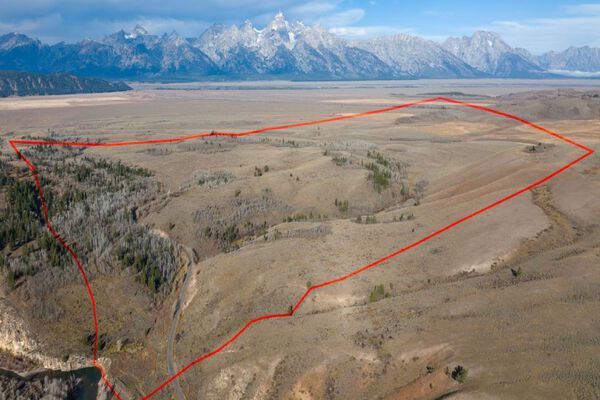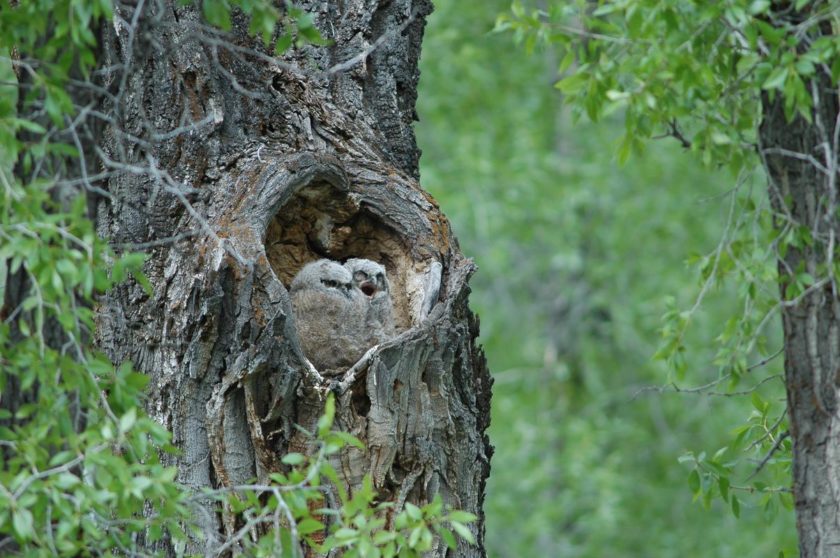Spring is an excellent time of year to look for birds in Grand Teton National Park. Warmer weather and longer days bring an increase in bird activity as many species return to their summer nesting grounds.
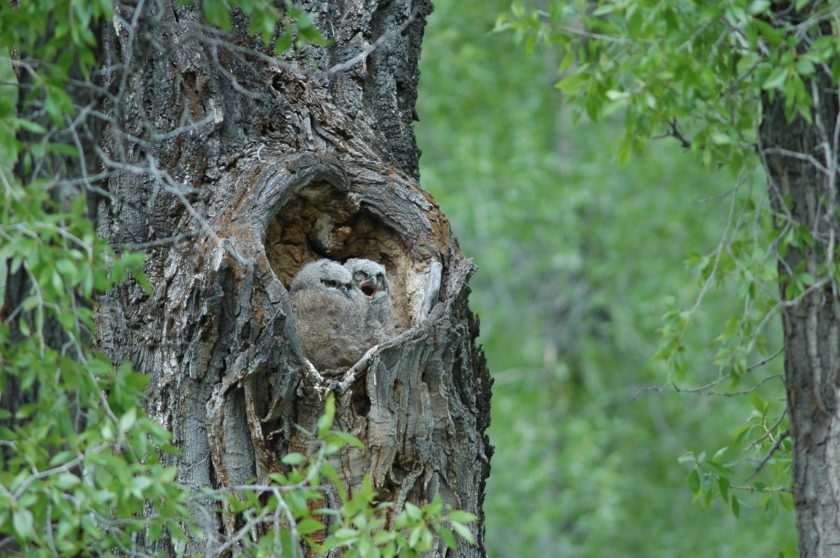
Young great horned owls in a cottonwood tree. Photo courtesy Gene Tremblay.
Over 300 species of birds have been sighted in Grand Teton because of its diverse habitats including sagebrush flats, spruce-fir forests, alpine meadows, lakes and streams. These communities provide birds with all that they need to survive—food, water, shelter, and safe places to nest and raise their young.
Listed below are some of the great places in Grand Teton to observe birds along with some of the species you might see. Be sure to keep your ears open, too–you may be able to identify birds by their call without ever seeing them. For additional information, look at the Bird Finding Guide provided by the park.
Oxbow Bend, Willow Flats, and Jackson Lake area: trumpeter swan, barrow’s goldeneye, common merganser, common loon, western grebe, American white pelican, osprey, bald eagle, sandhill crane, white-crowned sparrow, and yellow warbler.
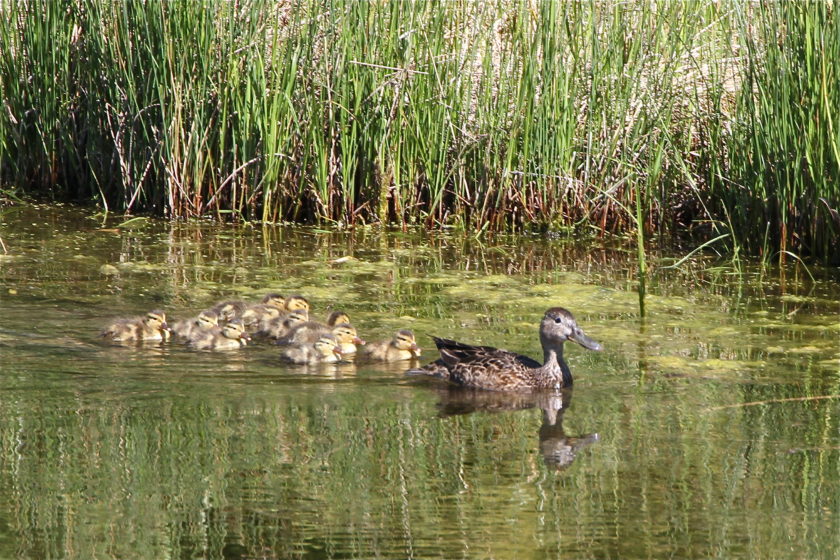
Northern shoveler female and chicks. Photo courtesy Gene Tremblay.
Antelope Flats area: greater sage-grouse, northern harrier, long-billed curlew, black-billed magpie, mountain bluebird, sage thrasher, brewer’s sparrow, vesper sparrow, and green-tailed towhee.
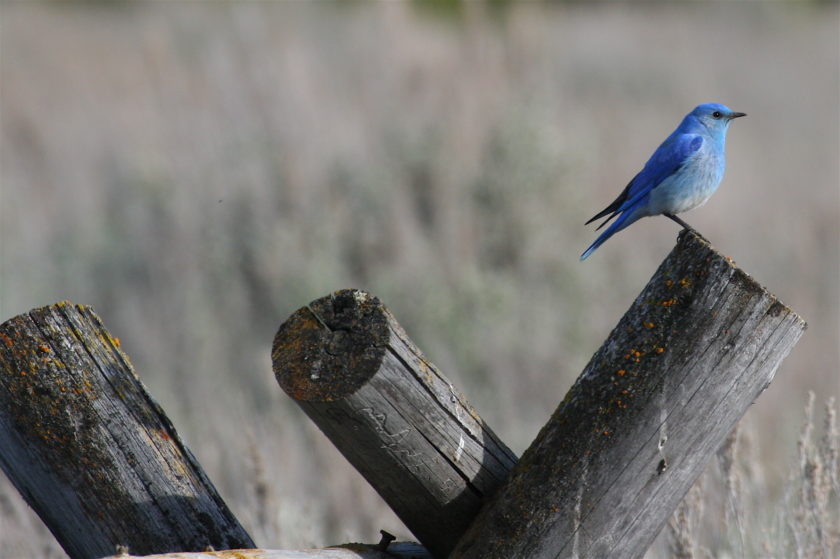
Mountain bluebird. Photo courtesy Gene Tremblay.
Pine forests (much of the valley): yellow-rumped warbler, dark-eyed junco, olive-sided flycatcher, ruby-crowned kinglet, and mountain chickadee.
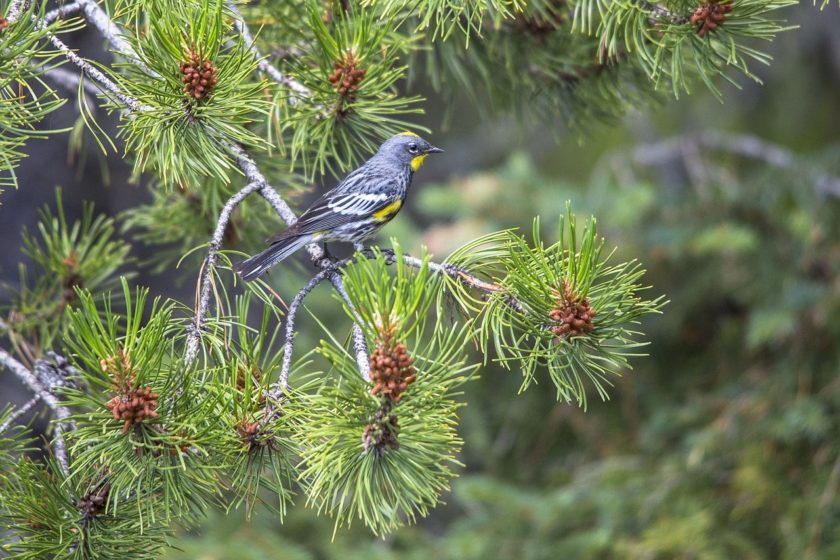
Yellow-rumped warbler. Photo courtesy Roger Smith.
Mountains (hiking up Cascade Canyon for example): golden eagle, ruffed grouse, broad-tailed hummingbird, red-naped sapsucker, Hammond’s flycatcher, gray jay, Steller’s jay, Clark’s nutcracker, red-breasted nuthatch, American dipper, Townsend’s solitaire, Swainson’s thrush, western tanager, black-headed grosbeak, Cassin’s finch, red crossbill, and pine siskin.
Remember to be respectful of nesting birds as they are easily disturbed. If an adult flies off of a nest or screams and circles around you, you are definitely too close! And like with all other animals in the park, please don’t feed the birds.
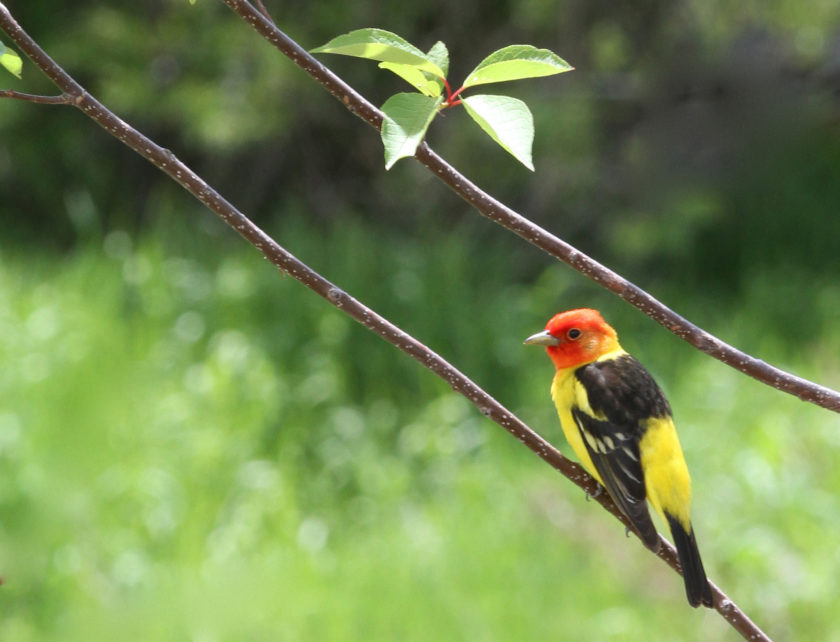
Western tanager. Photo courtesy Gene Tremblay.
If you are planning a trip to the park to look for feathered creatures, make sure to bring some of the following items:
• A pair of binoculars. A spotting scope and tri-pod can also be useful for spotting nests from afar if you have them.
• A field guide to birds—we recommend Birds of Grand Teton National Park and the Surrounding Area, by Bert Raynes.
• If you are carrying your smart phone into the field, make sure to download the free app iBird.
• A bird checklist you can pick up at a park visitor center if you want to keep track of what you are seeing.
• If you see something unusual or rare, please report these at a ranger station.
Happy birding!









